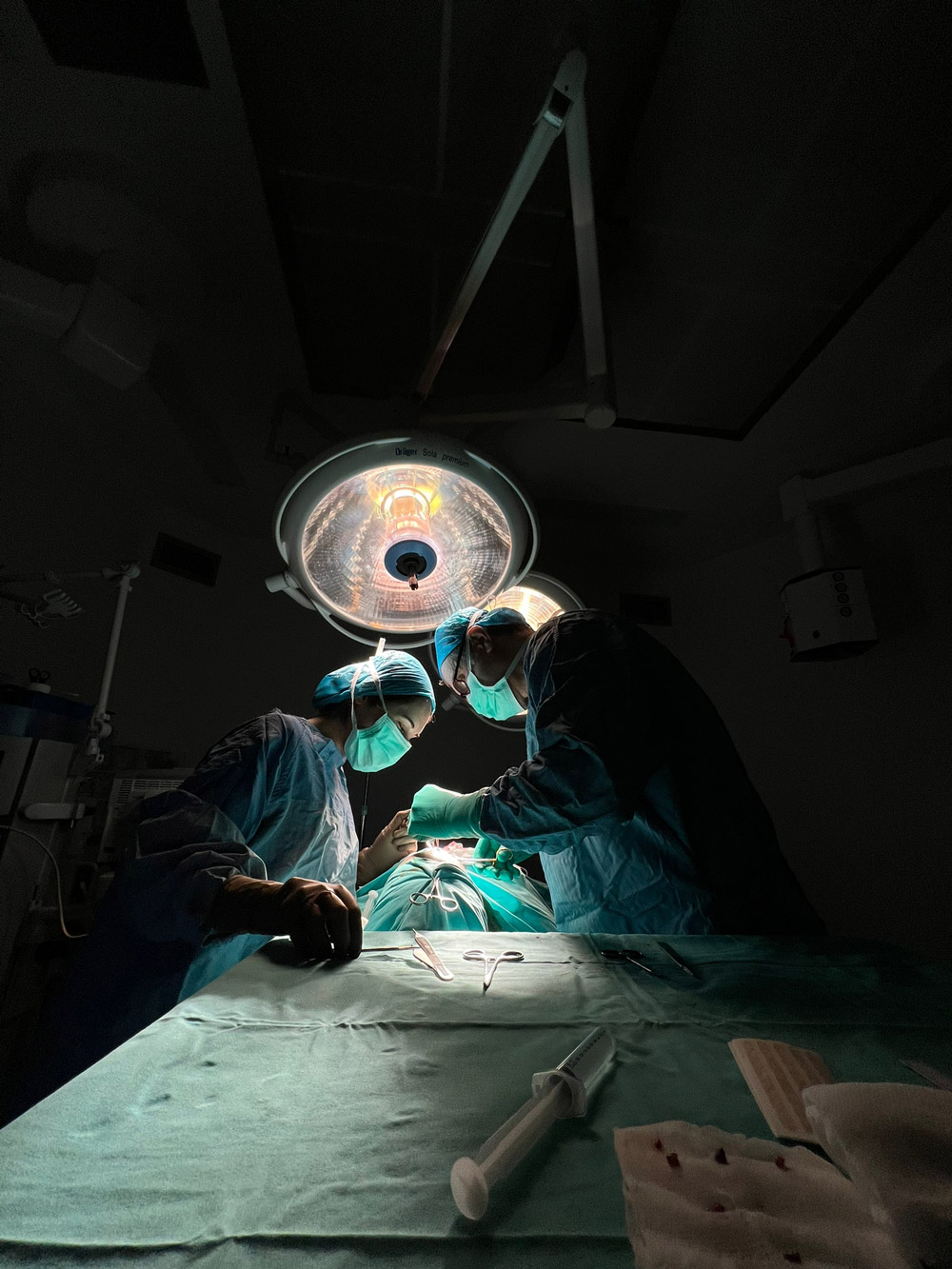A face lift, medically known as rhytidectomy, is a cosmetic surgical procedure aimed at rejuvenating the face by addressing signs of aging such as sagging skin, wrinkles, and loss of facial muscle tone. This transformative procedure offers numerous benefits, both physical and psychological, to those seeking to turn back the clock and regain a more youthful appearance.
One of the primary benefits of a face lift is the restoration of a firmer, more youthful facial contour. Over time, the natural aging process, gravity, and environmental factors can cause the skin to lose its elasticity, leading to sagging jowls, neck bands, and deep facial creases. A face lift effectively tightens the skin and underlying muscles, providing a smoother and more lifted appearance.
Furthermore, a face lift can significantly enhance self-confidence and self-esteem. Many individuals undergo this procedure to feel better about their appearance, which can positively impact their overall well-being. A rejuvenated and youthful look can boost one’s self-assurance, leading to a more active and fulfilling lifestyle.
In addition to the physical improvements, a face lift can also have a positive impact on mental health. The reduction in visible signs of aging can help individuals feel more vibrant and less self-conscious, which can reduce symptoms of depression or anxiety related to aging concerns.
Moreover, a face lift is a long-lasting solution to combat the signs of aging. While non-surgical treatments may provide temporary results, a face lift typically offers more durable outcomes, with results lasting for several years. This longevity can make it a cost-effective option in the long run.
It’s important to note that the benefits of a face lift are contingent on the expertise of the surgeon and the patient’s specific goals. A skilled plastic surgeon can tailor the procedure to achieve natural-looking results while minimizing potential risks. Therefore, choosing the right surgeon is crucial to realizing the full advantages of a face lift.
Understanding the Face Lift Surgery Process
A facelift, medically known as rhytidectomy, is a surgical procedure aimed at reducing the visible signs of aging on the face and neck. It’s a cosmetic surgery that can help tighten sagging skin, remove excess fat, and improve facial contours. Here is an overview of the facelift surgery process:
Consultation:
The first step in the process is a consultation with a board-certified plastic surgeon. During this consultation, you’ll discuss your goals, expectations, and any concerns you may have. The surgeon will assess your facial structure and skin condition, as well as your overall health to determine if you are a suitable candidate for the procedure.
Preoperative Preparation:
If you are deemed a good candidate for a facelift, you’ll receive preoperative instructions, which may include guidelines on medications, alcohol, smoking, and dietary restrictions. You may also be asked to arrange for someone to drive you home after the surgery.
Anesthesia:
Facelift surgery is typically performed under either general anesthesia or intravenous sedation with local anesthesia. Your surgeon will discuss the best anesthesia option for you during the consultation.
Incisions:
The surgeon will make incisions, usually along the hairline and around the ears, to access the underlying tissues. The specific incision pattern will depend on the type of facelift you’re getting (traditional facelift, mini facelift, or neck lift).
Tissue Repositioning:
After making the incisions, the surgeon will lift and reposition the underlying tissues, such as muscles and fat, to create a more youthful facial appearance. Excess fat may be removed, and the skin is tightened.
Skin Redraping:
The excess skin is redraped over the repositioned tissues, and any excess skin is trimmed away. The incisions are then closed with sutures or other methods, like skin adhesives or staples.
Recovery:
After the surgery, you’ll be monitored in a recovery area until the effects of anesthesia wear off. You may experience some swelling, bruising, and discomfort, which can be managed with prescribed pain medication. It’s essential to follow your surgeon’s postoperative care instructions carefully to minimize complications and ensure proper healing.
Healing and Results:
The recovery period varies from patient to patient, but most people can return to their regular activities within a few weeks. However, strenuous exercise and sun exposure should be avoided during the initial healing phase. It may take several months for the full results to become apparent, as swelling and bruising gradually subside.
Cost Considerations for a Face Lift Surgery
The cost of a facelift surgery can vary significantly based on various factors, including the surgeon’s experience, geographic location, the extent of the procedure, and the facility where it’s performed. Here are some cost considerations to keep in mind:
Surgeon’s Fee:
The surgeon’s fee is a significant portion of the total cost and can vary widely depending on the surgeon’s reputation, expertise, and geographic location. Highly experienced and board-certified plastic surgeons often charge more for their services.
Type of Facelift:
The specific type of facelift you choose will impact the cost. Mini facelifts and neck lifts are generally less expensive than full facelifts or comprehensive facial rejuvenation procedures.
Anesthesia and Operating Room Fees:
The cost of anesthesia, as well as the use of the operating room and surgical facility, is typically included in the overall cost. The type of anesthesia used (general anesthesia or intravenous sedation) can affect the cost.
Additional Procedures:
If you opt to combine your facelift with other cosmetic procedures such as eyelid surgery (blepharoplasty), brow lift, or liposuction, the total cost will increase.
Geographic Location:
The cost of facelift surgery can vary significantly based on where you have the procedure done. Major metropolitan areas and regions with a higher cost of living tend to have higher prices for cosmetic surgery.
Facility Costs:
The facility where the surgery is performed may have its own fees. Accredited surgical centers or hospitals with experienced staff and advanced equipment may charge more than less-equipped facilities.
Preoperative and Postoperative Care:
Costs associated with preoperative consultations, medical tests, prescription medications, postoperative follow-up visits, and recovery-related expenses should be considered.
Before and After: Transformative Face Lift Examples
Before-and-after photos can provide a visual representation of the transformative effects of a facelift. However, it’s essential to keep in mind that individual results can vary based on factors such as the patient’s age, skin condition, surgical technique, and the skill of the surgeon. Additionally, these photos are typically taken several months after the procedure when the full results have become apparent, as swelling and bruising subside. Here are some general examples of the transformative effects of a facelift:
- Sagging Jawline and Neck: Before a facelift, a patient may have visible jowls, loose skin, and excess fat around the jawline and neck. After the surgery, the jawline appears more defined, and the neck looks smoother and firmer.
- Deep Facial Wrinkles: Facelifts can reduce the appearance of deep wrinkles, such as nasolabial folds (smile lines) and marionette lines (lines that run from the corners of the mouth to the jawline). After a facelift, these lines are often significantly diminished.
- Sagging Cheeks: Sagging cheeks and loss of cheek volume are common signs of aging. A facelift can restore a more youthful contour to the cheeks, providing a lifted and rejuvenated appearance.
- Improved Skin Texture: Facelift surgery can improve the overall texture and quality of the skin. It can help reduce age-related skin laxity and create a smoother, more youthful appearance.
- Natural-Looking Results: A successful facelift should provide natural-looking results that enhance the patient’s features without appearing overly tight or pulled. Many patients report feeling and looking years younger after the surgery.
- Enhanced Confidence: Beyond the physical changes, a facelift can have a profound impact on a person’s self-esteem and confidence. Many individuals feel more confident and satisfied with their appearance after the procedure.





